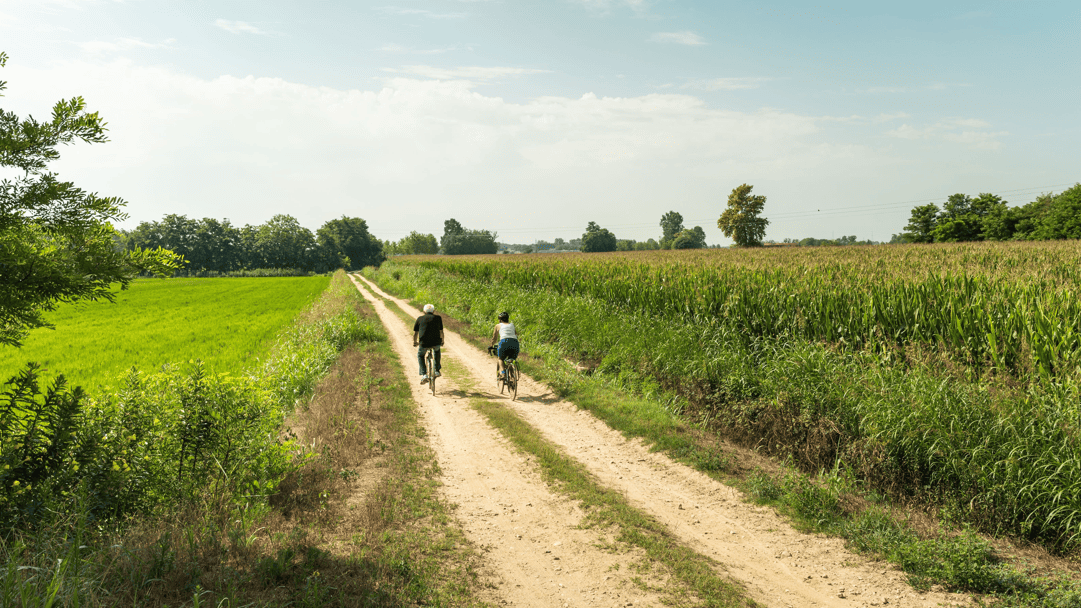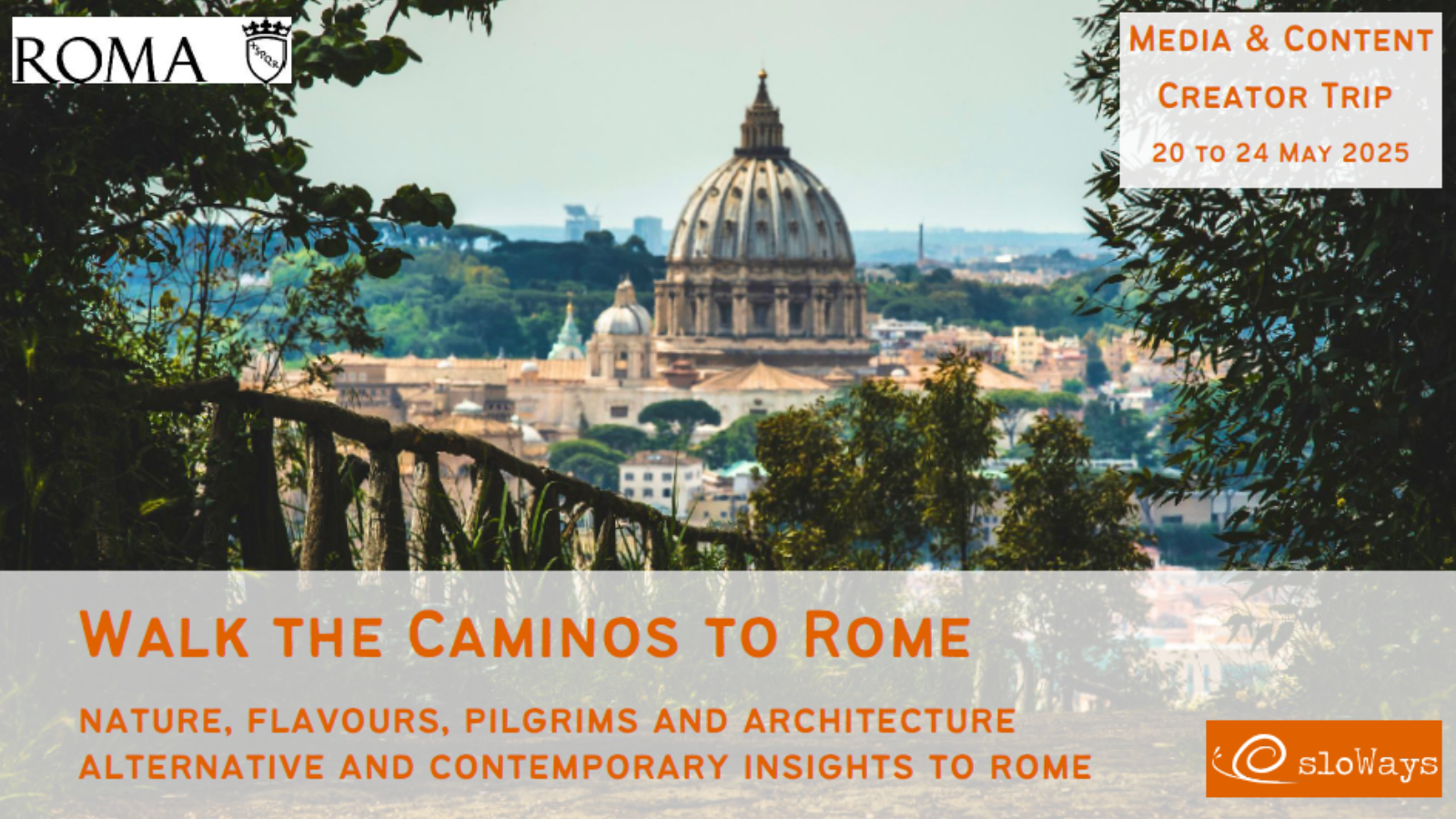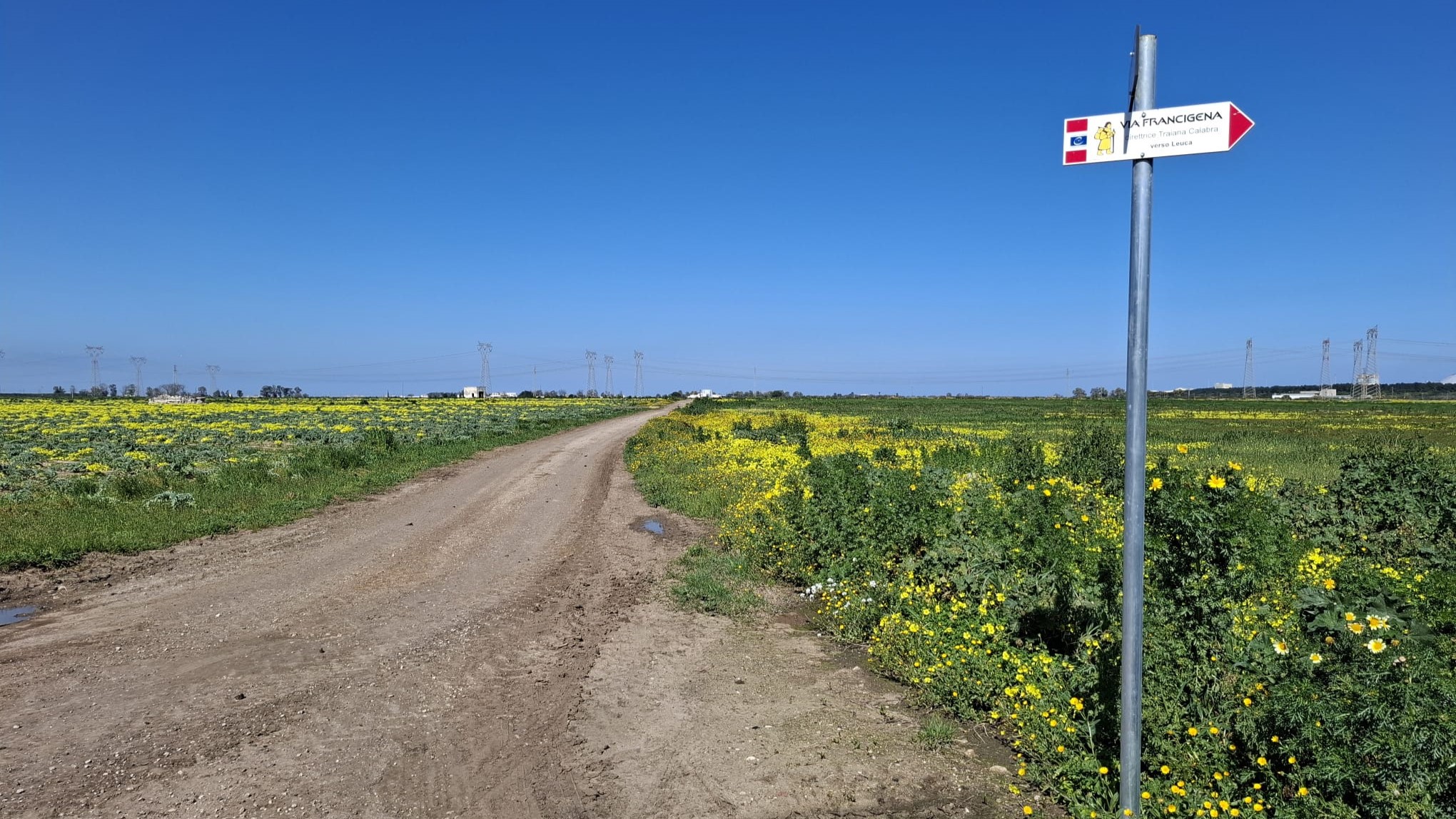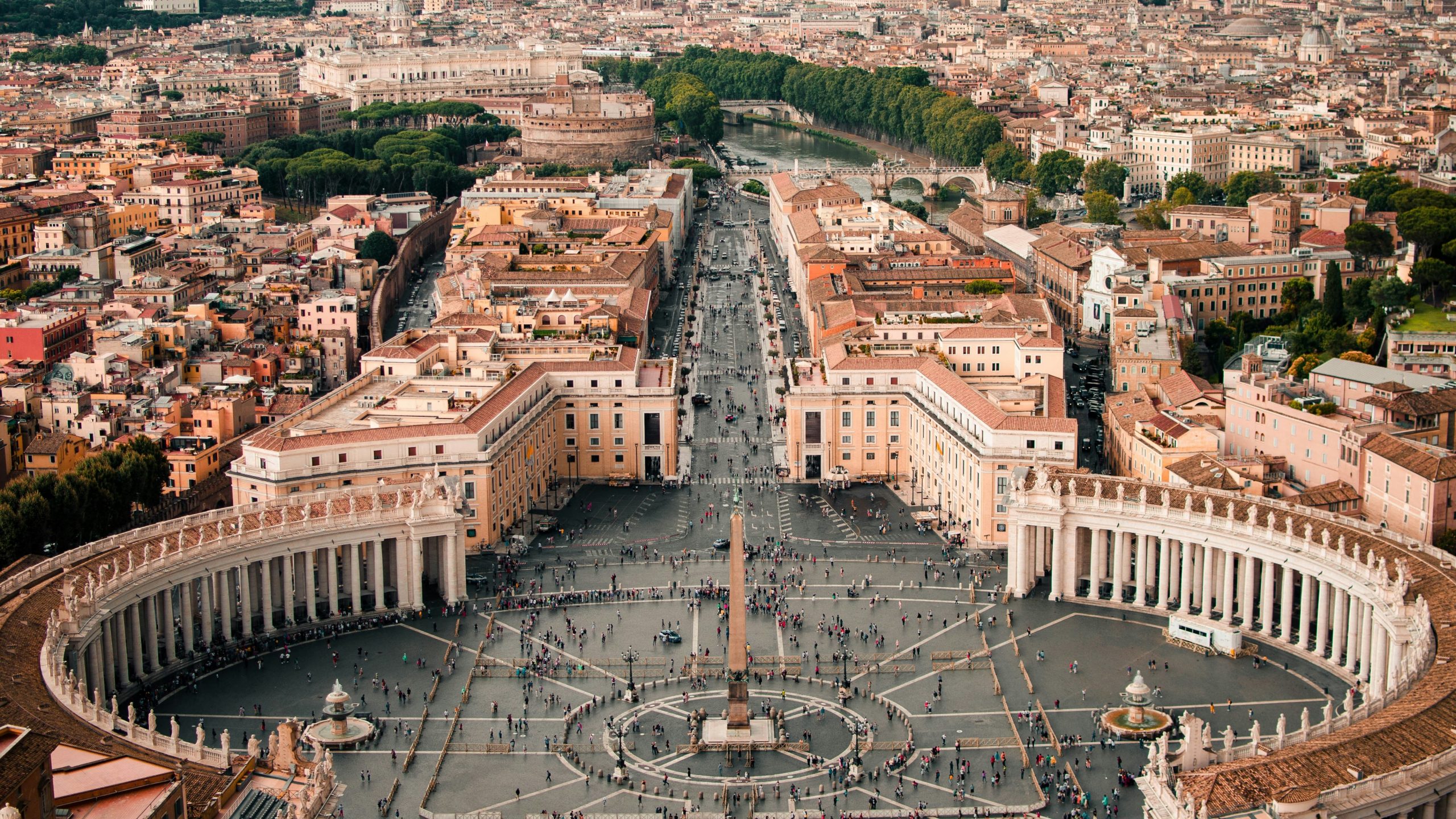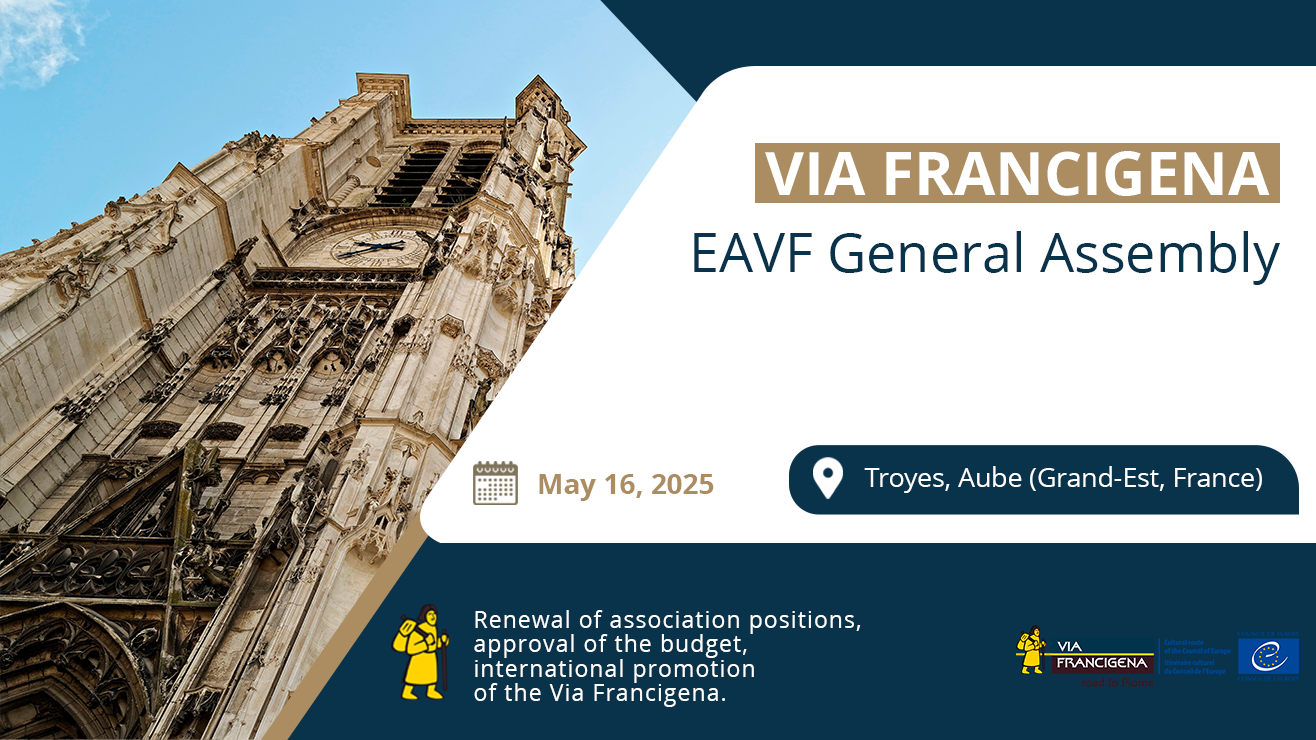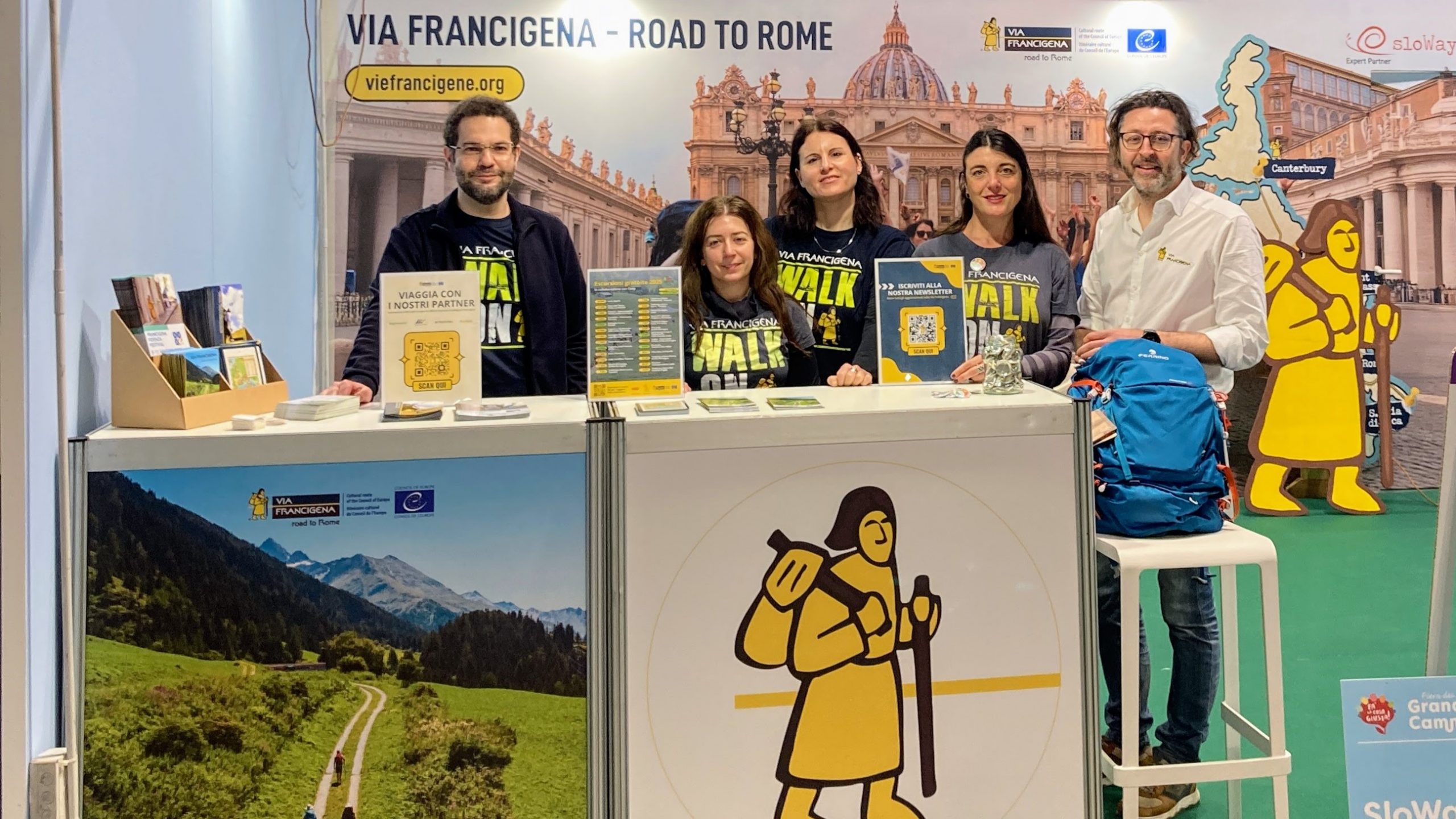The stages of the Via Francigena in Lombardy region in Italy are seven in total, stretching from the town of Palestro to the Piedmontese border, passing through the provinces of Pavia and Lodi, up to the stage from Orio Litta to Piacenza, which marks the beginning of Emilia-Romagna after crossing the Po River.
This is a route of around 150 km, divided into seven stages, which tells the stories of little-known but very fascinating villages scattered along rivers such as the Sesia, Po, and Ticino, through cultivated fields and rice paddies. In preparation for the 2025 Jubilee, the Via Francigena in Lombardy will welcome many pilgrims: thanks to the collaboration between the EAVF, the Lombardy Region, the provinces of Pavia and Lodi, and the municipality of Orio Litta, the project “La Via Francigena in Lombardy, towards the 2025 Jubilee” has been created, dedicated to enhancing and improving the Lombard stretch of the Francigena. Initiatives include improving signage in the province of Lodi, in line with the signage guide approved by EAVF and the involved Regions; a series of training meetings for public and private entities on promotion, hospitality, services, and cultural enhancement; and the distribution of informational materials for pilgrims. Thanks to the valuable collaboration with Free Wheels Onlus, the Accessibility Guide has also been created, with the support of experts and associations, to make the route more inclusive.
Must-See Places in Lombardy region
Along the Via Francigena in Lombardy, many places of historical, architectural, religious, and culinary interest can be found. EAVF has mapped 28 of them:

- The Tower of Palestro – (PV)
In the eponymous town, in the province of Pavia, you can admire this tower, once part of a medieval castrum, now disappeared due to the devastations of the 17th and 18th centuries. The Tower is the only surviving structure of the original complex, which, according to historical records, included at least six towers, the residence of the feudal lords, civil and military buildings, prisons, and a place of worship. Strategically located near the Sesia River, along the road between Vercelli and Novara, and on the Via Francigena, the castrum allowed for effective control of the territory. - San Valerian Church – Robbio (PV)
Founded in the early 11th century by the Lomellina family of da Besate, it was part of a monumental complex that included a monastery, a baptistery, and a bell tower. As a priory dependent on the Benedictine Abbey of Cluny, and due to its location along the Via Francigena, the church played an important role and offered hospitality to pilgrims on their way to Rome. - The Romanesque Church of San Pietro – Robbio (PV)
Dating back to the last quarter of the 12th century, the main building was constructed by Lombard artisans. Notably, the façade features a terracotta portal made by the Comacini Masters.
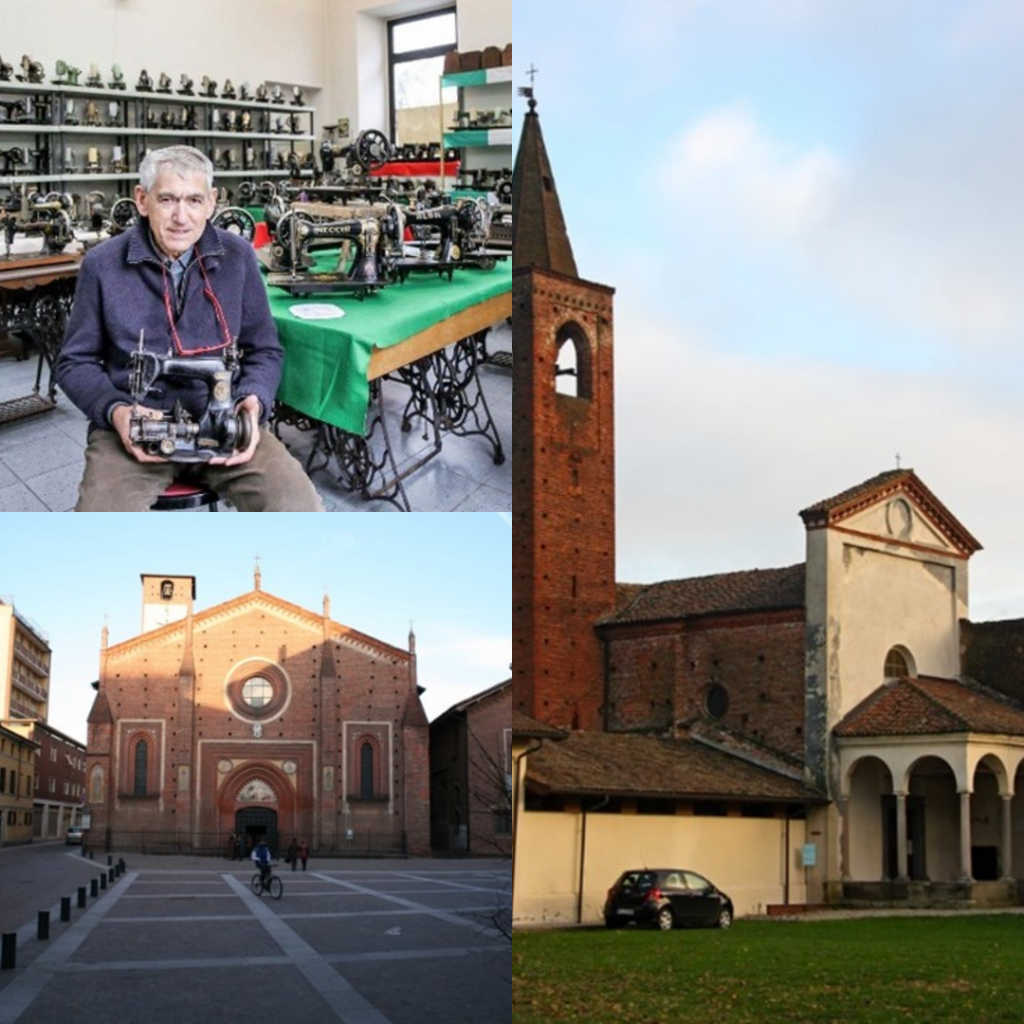
- The Vivetta Sewing Machine Museum – Robbio (PV)
This museum houses a unique collection of over 500 sewing machines, from renowned brands like Singer and Necchi to lesser-known ones. Giovanni Baldin, the founder of the museum and project, has been collecting these machines for 40 years. - The Basilica of San Lorenzo – Mortara (PV)
Built towards the end of the 14th century by Bartolino da Novara, it features a Gothic-style terracotta façade and contains numerous works of art. Upon entering, to the right, there is a 15th-century fresco depicting the Virgin with Child, which has long been a focus of great devotion by the people of Mortara. - The Abbey of Sant’Albino – Mortara (PV)
Built at the request of the English monk Alcuino Albino, it stands on the site where, on 12th October 773, Charlemagne’s Franks defeated the Lombards of King Desiderius, resulting in many casualties, including two Frankish paladins: Amelio d’Alvernia and Amico Beyre. Legend has it that Charlemagne ordered them to be buried in two nearby churches, but the next day, the two bodies were found in the same church. It was then that Albino, Charlemagne’s advisor, proposed the establishment of a monastery on the site.

- The Province of Pavia – Lomellina Area
This region is the leading rice producer in Italy and Europe, so much so that the plains of Lomellina and the Lower Pavese are known as “the land of rice”. Originally, however, the area was marshy and partly barren, and it was only from the Middle Ages onwards that the land was transformed, enriched with canals and ditches. Today, the fertile flooded rice paddies turn the landscape into a checkerboard of water, reflecting the many farmhouses and castles of the region, along with birdlife like herons, ibis, and mallards. - Sanctuary of Madonna della Bozzola – Garlasco (PV)
Erected in 1465 following an apparition of the Madonna to a mute girl, who was healed by the Virgin and asked to build a sanctuary in her name to protect the area. Upon returning to the village, the girl recounted the story, and the locals, astonished, began building the sanctuary. - Parasacco – Zerbolò (PV)
On the right bank of the Ticino River, Parasacco was originally a commercial settlement. The Tower that once belonged to the old castle remains, a stronghold built by the people of Pavia between the 14th and 15th centuries to counter the Milanese expansionist ambitions over Lomellina.

- The Certosa of Pavia – (PV)
A monumental complex that includes the Church of Santa Maria delle Grazie, the Ducal Palace, and two cloisters for monastic life. Commissioned in 1396 by Gian Galeazzo Visconti, it was intended as a palace, palatine church, and mausoleum. Today, the Certosa houses a museum and even an herbal shop where the monks sell herbal teas, liqueurs, and digestives made from medicinal plants grown in the garden. - Pavia Castle – (PV)
Built by Galeazzo II Visconti starting in 1360, it became more of a refined court residence than a defensive fortress. The elegant decorations, such as the graceful windows and internal frescoes depicting battle scenes, court life, and hunting, suggest its role as a royal residence. - Pavia Cathedral – (PV)
Construction of the Cathedral of Pavia began in 1488 and was completed in the 1930s. Built at the request of the citizens, the cathedral was erected above the two Romanesque churches of St. Stephen and St. Mary of the People, which are now dedicated to the saints. The design, created by Donato Bramante, features a Greek cross and an octagonal dome. Inside, the cathedral houses the relics of saints and blessed individuals, including St. Siro, patron of Pavia, and the Holy Spikes of Christ’s Crown.

- Basilica of San Michael Mayor – Pavia
One of the finest examples of Pavia’s Romanesque architecture, it was built on a previous Lombard place of worship. During the Carolingian period, it became a palatine chapel and later, from the end of the 9th century, the preferred venue for royal rituals, baptisms, and coronations, including that of Frederick Barbarossa in 1155. - San Pietro in Ciel d’Oro – Pavia
Built on an ancient Lombard temple, it is said to be the same place where Theodoric, the Ostrogoth king, had the philosopher Boethius executed and buried for treason. The current Romanesque basilica was constructed between the late 11th and early 12th centuries and reached its peak under King Liutprand, who transferred the remains of St. Augustine to this site. - Belgioioso Castle – (PV)
Founded by Gian Galeazzo II Visconti in the 14th century on family land where the village of Belgioioso would later develop, the name “gioioso” is said to reflect the pleasure the Duke took in staying in the area, while “bel” was added after the castle’s embellishment.
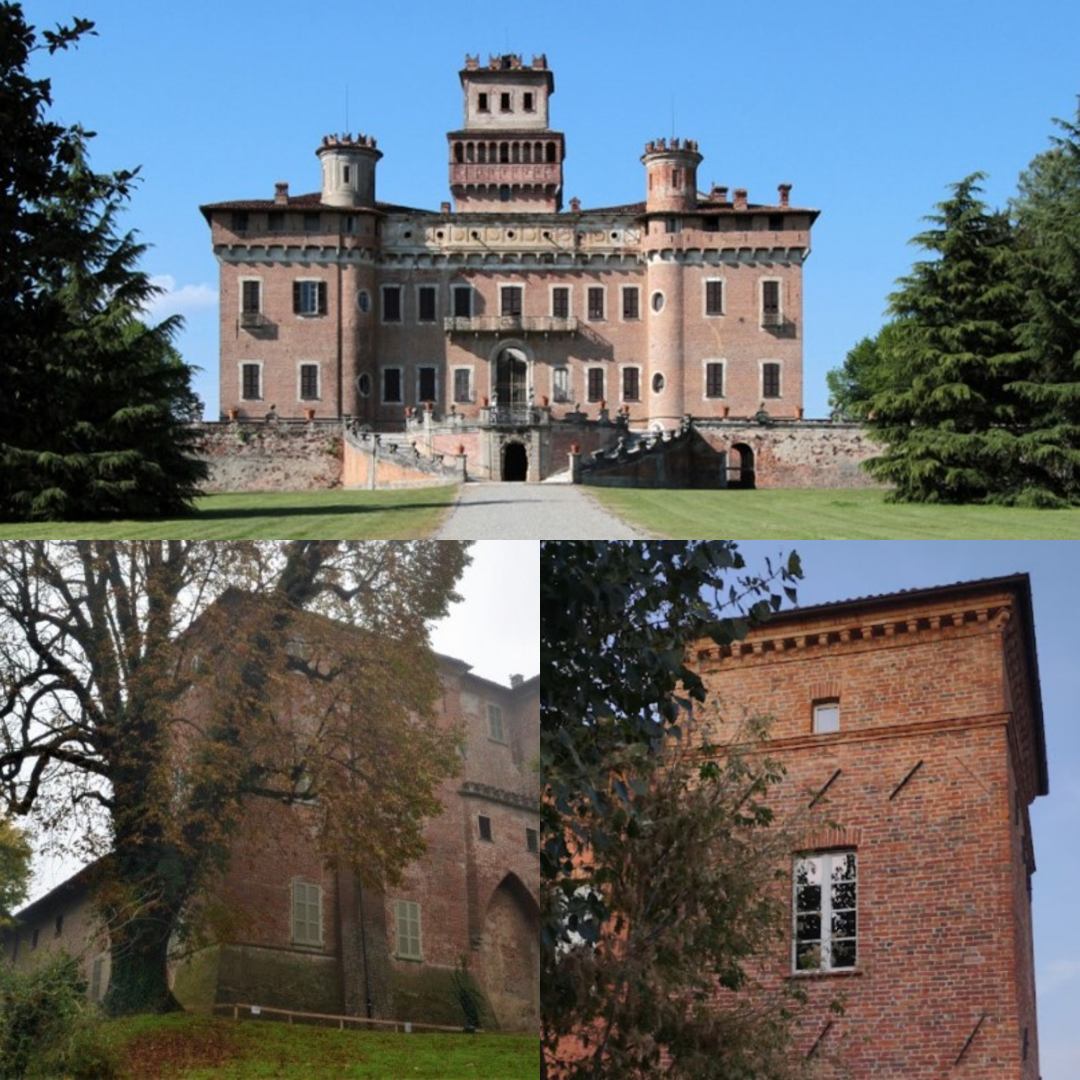
- Cusani Visconti Castle – Chignolo Po (PV)
Also known as the Castle of Chignolo Po, it was built in the 13th century on a Lombard stronghold, of which only the Tower remains. The castle became one of the largest Lombard estates in the 13th century, passing ownership first to the Pusterla family and then to the Cusani family. - Cavazzi Castle – Somaglia (LO)
Built on an ancient castrum from the year 1000, the current appearance of the castle derives from two main interventions: in the 14th century, Barnabò Visconti built the part with exposed brick and Ghibelline merlons; in the 17th century, the Cavazzi family transformed the fortress into a noble residence. - Zanardi Landi Palace – Guardamiglio (LO)
The Tower, or “Torretta,” is all that remains of the summer residence commissioned by the Zanardi-Landi family in the 16th century. Today, the structure hosts events, cultural activities, and temporary exhibitions, making it a central location in the town.

- Church of San Pietro – Mezzana Casati (LO)
Built around 1573, this church has a Latin cross plan with a single nave, two chapels in the transept, and an elevated presbytery, all covered by ribbed vaults. - Cascina Aione – Orio Litta (LO)
Originally a flourishing agricultural company until the 1970s, Cascina Filandone’s name changed to “Aione” in recent years, recalling the large square adjacent to it, today known as Piazza Aldo Moro and a public garden. - Benedictine Grange – Orio Litta (LO)
The term “Grange” comes from Latin and means “granary”. It was an agricultural centre managed by monks, storing and producing resources for monastic life. Its most distinctive feature is the panoramic tower, which today offers rooms for pilgrims travelling the Via Francigena, preserving one of the Grange’s historical functions.

- Church of Sant’Andrea – Corte Sant’Andrea (LO)
Located in the village of Corte Sant’Andrea, this church stands at the confluence of the Lambro and Po rivers. It was historically referred to as “Santo Andrea ad Caudam” due to the shape of the land resembling a long tail (“caudam” in Latin). - Sigerico Ford – Calendasco (PC)
In the hamlet of Senna Lodigiana, you will find the Transitum Padi, the ancient ford over the Po River, where pilgrims would cross to reach Soprarivo di Calendasco, the first Emilia-Romagna stage of the Via Francigena.
- Province of Pavia – (Typical Dishes)
The province of Pavia is renowned for its excellent wines and rich agricultural and culinary traditions. A staple product of Pavia is rice, with over 80,000 hectares of rice fields in the province, making it the leading rice producer in Italy. Pork is also a key ingredient, and it is used to produce the Salame di Varzi, typical of the Oltrepò area, which utilises all parts of the pig, even the “noble” cuts. Other popular pork products include ciccioli (pork cracklings), cotechino (a type of sausage), and sanguinaccio (blood sausage). Barbera, Bonarda, Moscato, and Pinot are just a few of the thirty-six types of wine produced in the Oltrepò. Other regional specialties include Borlotti beans, grown for centuries in Gambolò, as well as in Garlasco and Mortara; the Bertagnina pumpkin of Dorno; and the Ecumenical Goose Salami, primarily produced in Mortara, so named because it is suitable for consumption by all three monotheistic religions.

- Province of Lodi – (Typical Dishes)
The culinary tradition of Lodi features typical products such as rice, cured meats, and especially cheeses. The king of Lodi cheeses is Grana, or Granone Lodigiano, from which raspadüra is made, thin shavings of cheese obtained using a special knife. Another local cheese is Pannerone, which is characterised by a bitter aftertaste and soft texture. In terms of desserts, mascarpone, made from cream, is a prominent ingredient. A traditional main dish is tripe. Other typical dishes include risotto (in variations with tomato and salamella sausage or with savoy cabbage and Borlotti beans), stewed frogs, loin rolls stuffed with Grana cheese and breadcrumbs, and desserts such as Tortionata and Sant’Angelo amaretti biscuits.
- Ticino Val Grande Verbano Biosphere Reserve – Milan, Novara, Pavia, Varese, Verbano-Cusio-Ossola
This reserve extends along the Ticino River, between Piedmont and Lombardy, covering over 332,000 hectares and including more than 200 municipalities. It forms an important ecological corridor within the Po Plain, with rich biodiversity, numerous historical sites, and is one of the largest river parks in Europe. The Ticino Val Grande Verbano Reserve was officially designated in 2018, expanding the existing Ticino Valley Reserve, which has been part of the UNESCO “Man and the Biosphere” (MAB) programme since 2002.
- Po Grande Biosphere Reserve – Pavia, Lodi, Piacenza, Cremona, Parma, Reggio Emilia, Mantua, and Rovigo
The Po Grande Reserve was established on 19th June 2019, joining the UNESCO “Man and the Biosphere” programme with the aim of promoting scientific cooperation, environmental sustainability, and a balance between human activity and nature. The reserve is located in the central stretch of the Po River and spans 286,600 hectares. It crosses the regions of Lombardy, Emilia-Romagna, and Veneto, involving 85 municipalities in the provinces of Pavia, Lodi, Piacenza, Cremona, Parma, Reggio Emilia, Mantua, and Rovigo.
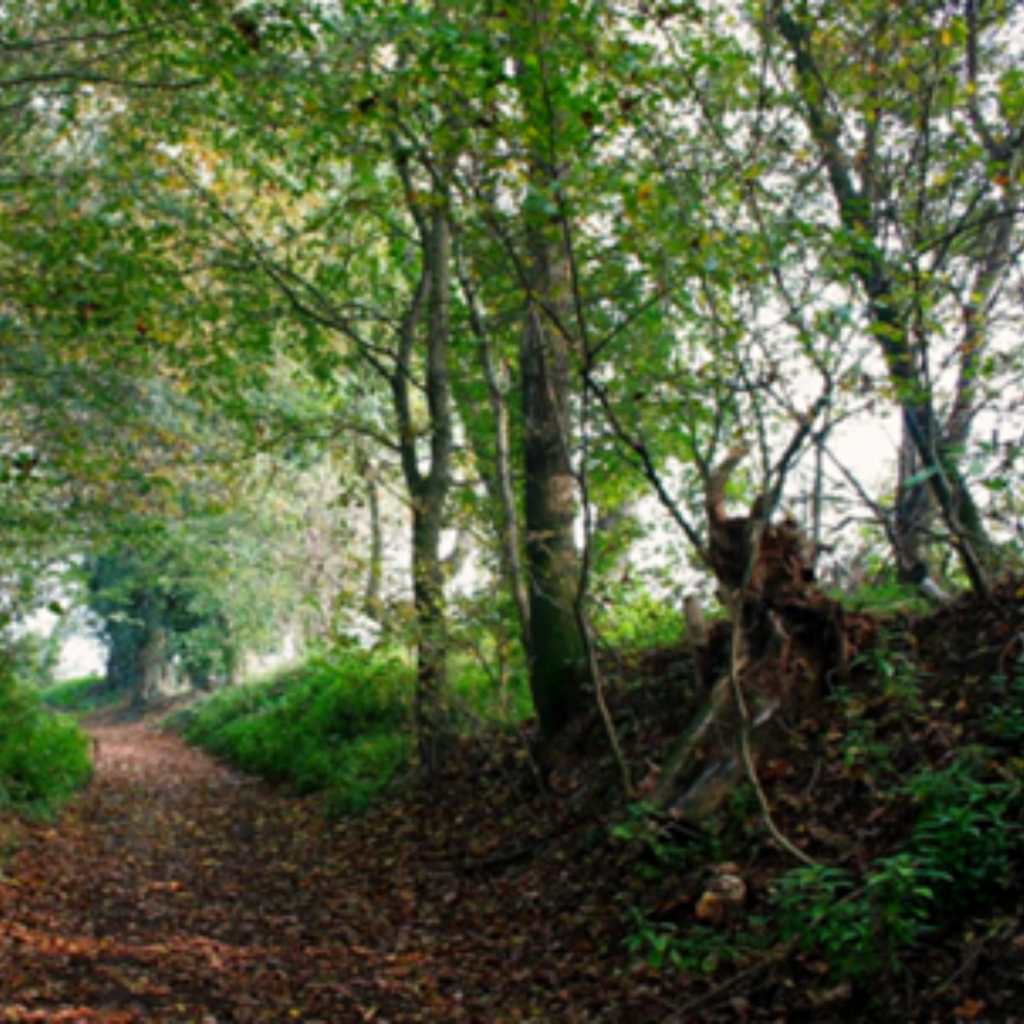
- Monticchie Nature Reserve – Somaglia (LO)
The landscape of Somaglia has long been characterised by dense forests and marshy areas, described in some ancient parchments as “Lacus de Barisiis”, as it was the meeting point for the old courses of the Lambro, Po, and Brembiolo rivers. The Monticchie Nature Reserve now spans 250 hectares, including 24.5 hectares of hydrophilic woodland and 225.5 hectares of agricultural land rich in canals and springs. The reserve is particularly notable for its fauna, including a significant heronry of over 600 breeding pairs, among which the Grey Heron is particularly prominent. The high quality of its waters is evidenced by the presence of a rare frog species, the Lataste’s Frog, as well as the Collared Grass Snake and the Spotted Salamander.
Additional Information
To embark on a journey through these areas, it is recommended to check the relevant websites for opening hours and booking requirements, as some sites may require prior reservations.



